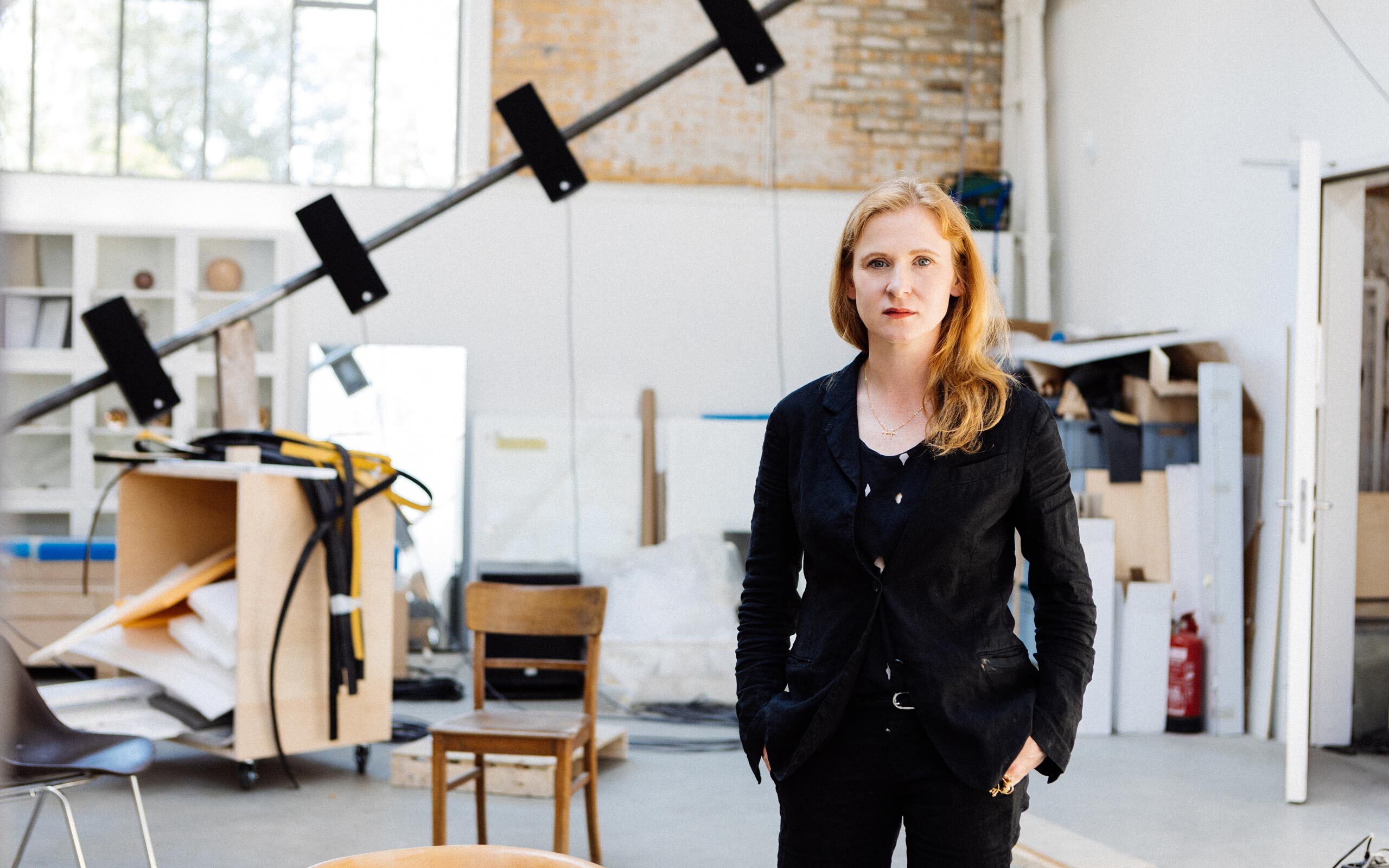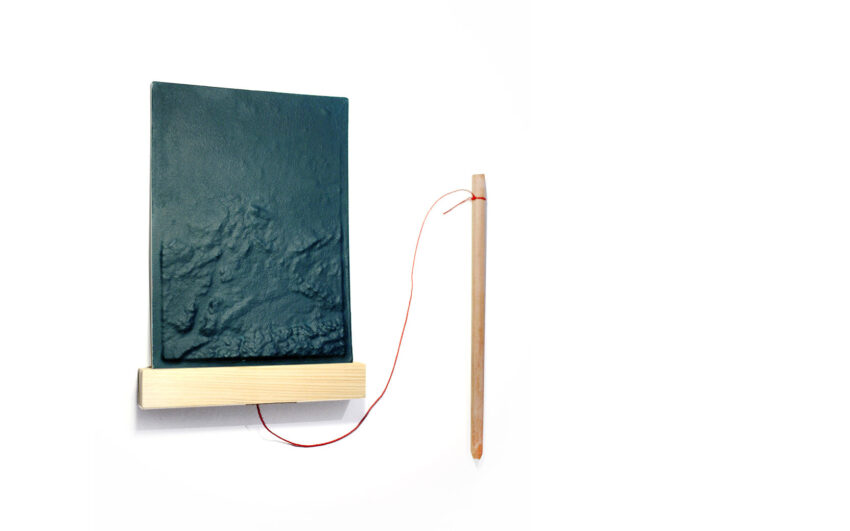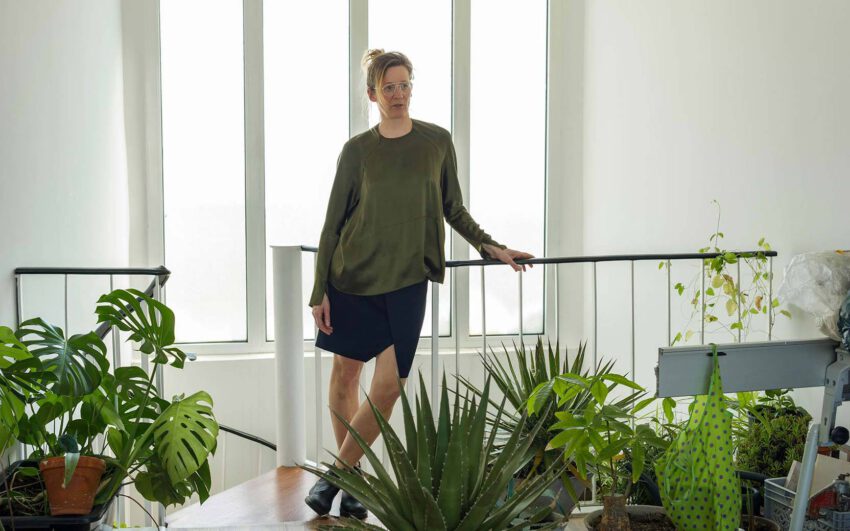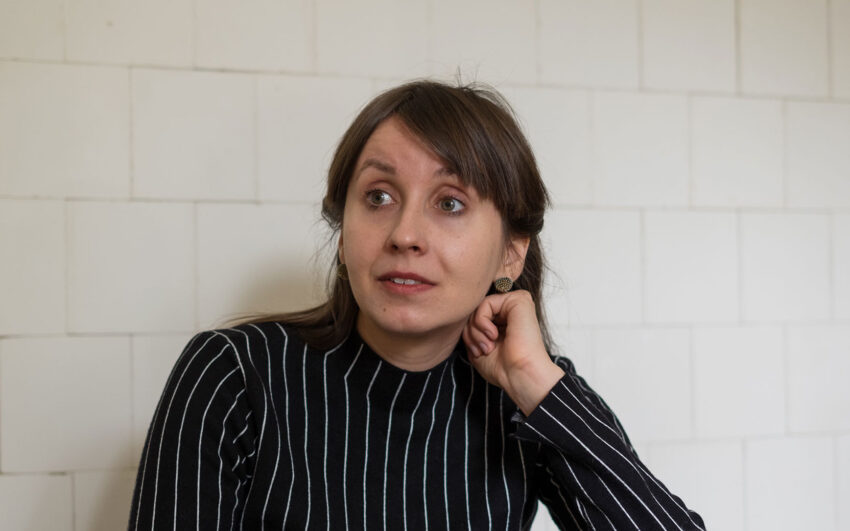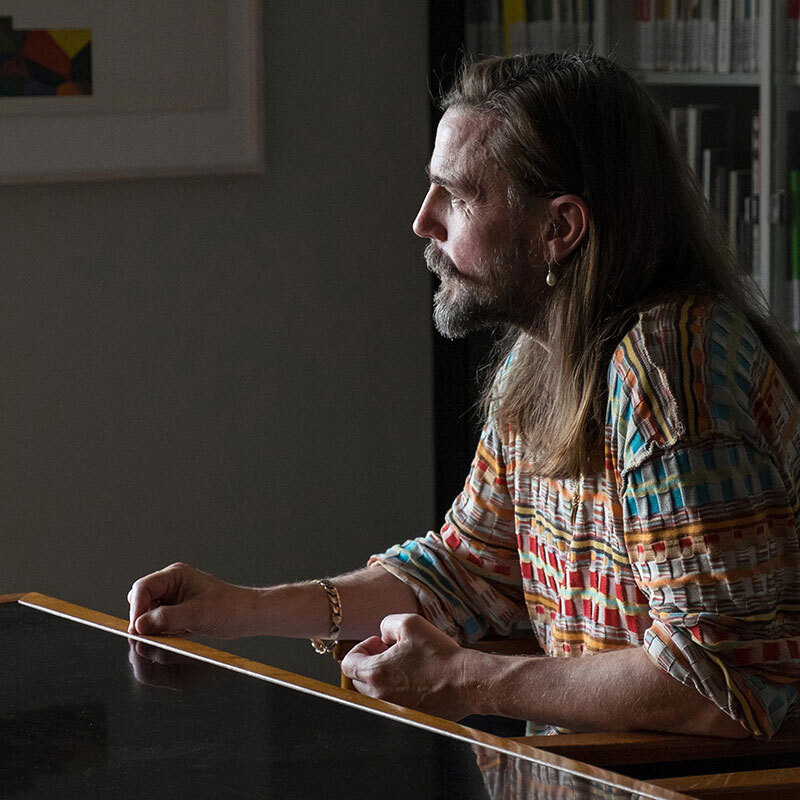Multidimensional sculptures, obscure objects, and installations that question the universe and what it means to be human – Alicja Kwade is one of the best-known artists in Germany and has been internationally successful for many years. Born in Katowice, Poland in 1979, the artist explores the interplay of matter and spirit, body and space in her works. Her mixed media works manipulate perception and physical experience. We met her in her sprawling studio in Oberschöneweide and talked about her studies at the University of the Arts, her search for artistic inspiration, and the impact of the pandemic on her work.
Alicja, your large solo exhibition In Absence at Berlinische Galerie begins in September. What will we get to see there?
Unfortunately, the plans have been unchanged for two years and were stalled by the pandemic. The show has been planned since the end of 2018 and was supposed to open in 2019. Then it was supposed to open in 2020, but was again postponed in hopes that the pandemic would pass quickly – first from May to September 2020, then to May 2021, and now to September. Honestly, I’ve already mentally withdrawn from it because for me as an exhibition conceived three years ago, internally it’s no longer exciting for me. Still, I’m looking forward to seeing it. Oddly enough, it’s an exhibition that appears as though I have thematically addressed this pandemic crisis, but that’s not the case, I planned it before the pandemic began. Despite the title In Absence, this is not a reappraisal or a commentary on the crisis. I left the exhibition completely as it was originally conceived.
The installation behind you is part of it?
This is a twenty-four channel sound installation that deals with the interplay of subject and object, centering and locating. It is about trying to understand what a subject is and why.
What is the title?
It’s called Clout-Count.
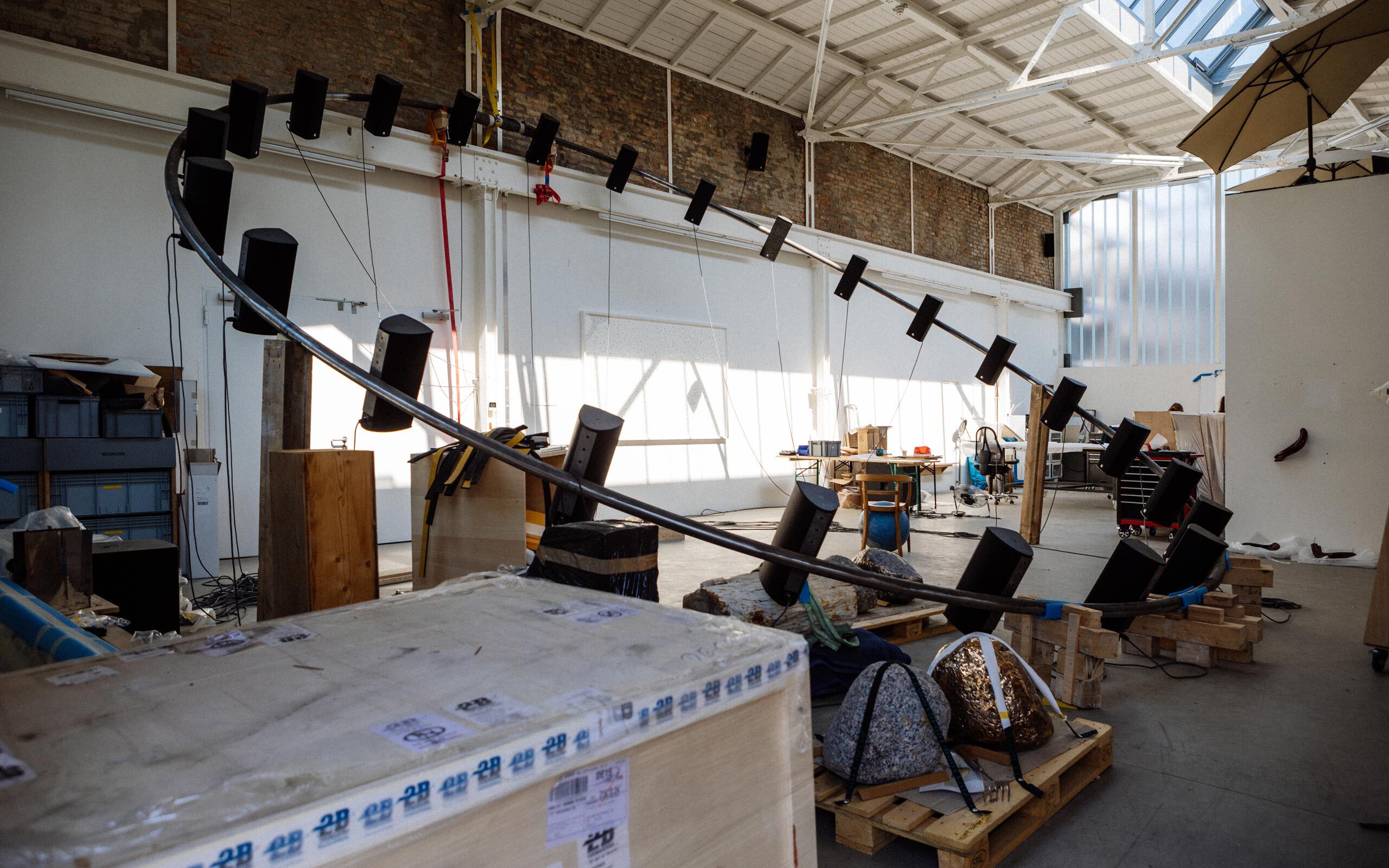
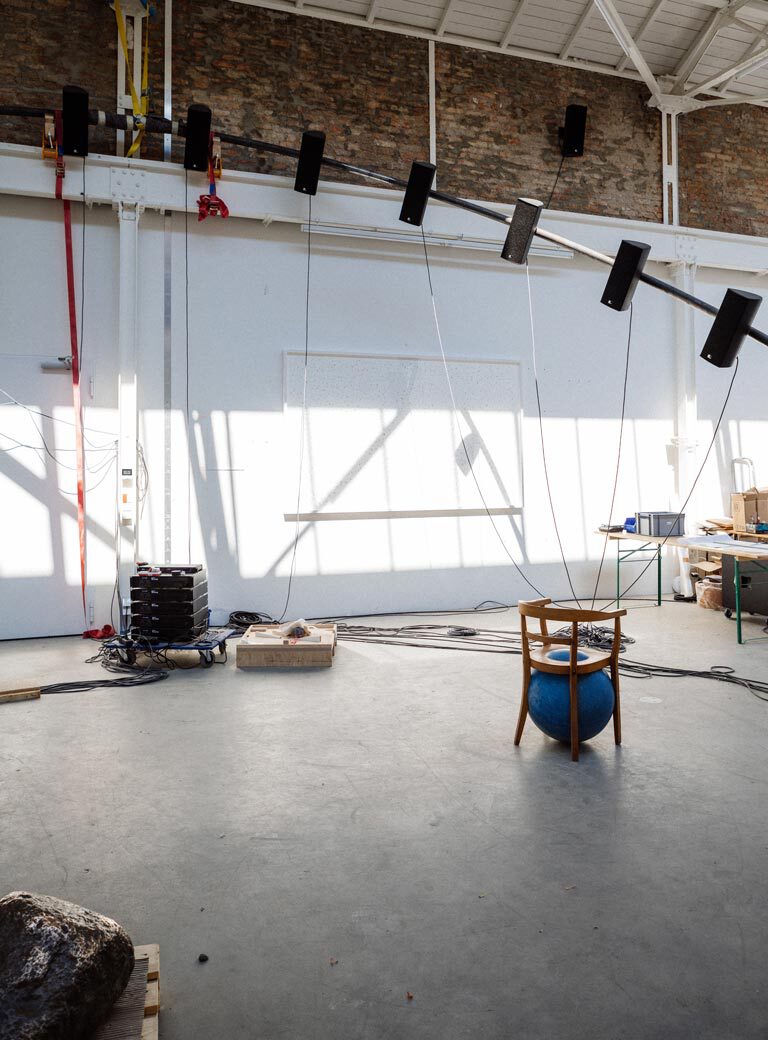
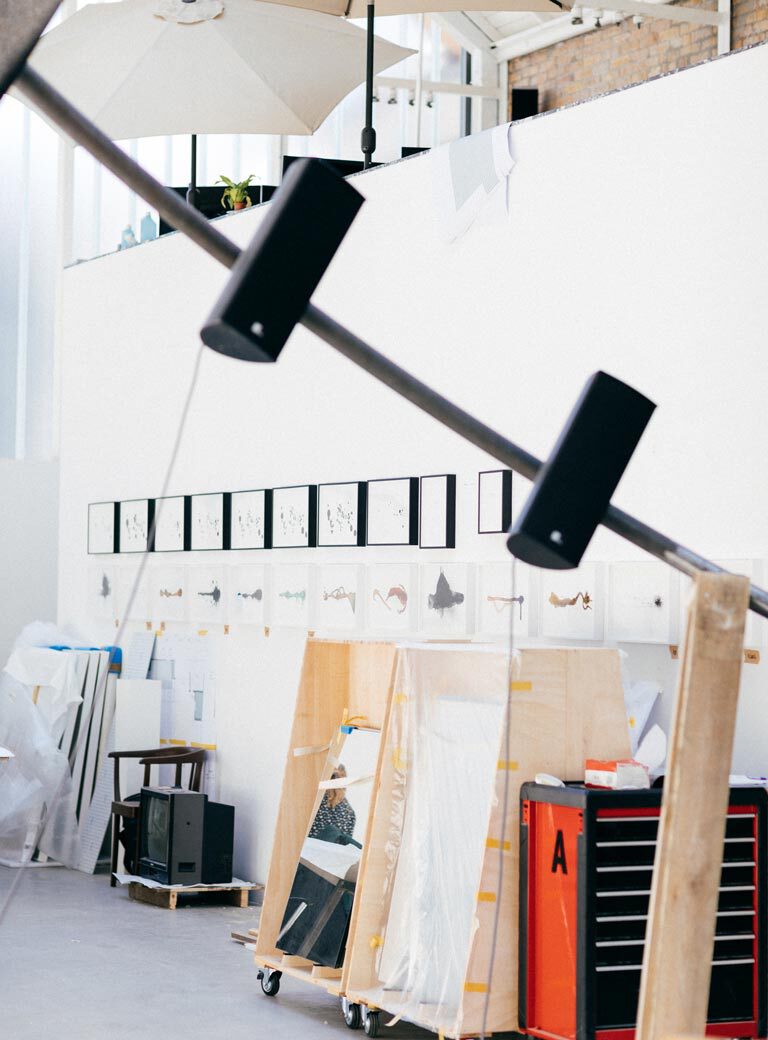
You studied at the University of the Arts in Berlin. How did that come about and why did you choose art as your field of study?
I didn’t decide it that way. It just happened. I didn’t sit down after graduating from high school and say, now I’m going to be a visual artist. That’s probably the case with very few artists, actors, and writers. You’ve usually always been that, and if you’re lucky enough, you can keep doing it. And that’s how it was with me.
Which artists and professors inspired and influenced you the most during your studies?
I can’t answer that so easily. The impression is always situational. Right now, you’re also being shaped by something that you can’t even name. I don’t know what is shaping me right now, but it’s certain that something is shaping me. That’s why it’s a question I don’t like to answer. Of course I had my “heroes” when I was very young. Those were, for example, most of the land artists. For me, that reshapes itself every day. One’s own view of things one admires changes permanently. The impression one had in the past, can only be described inaccurately in the present.
Why the “land art” artists?
I can’t describe it exactly. I just liked the size of the works, this idea of the enforcement of the impossible and the connection of the given form, the landscape and the sculpture.
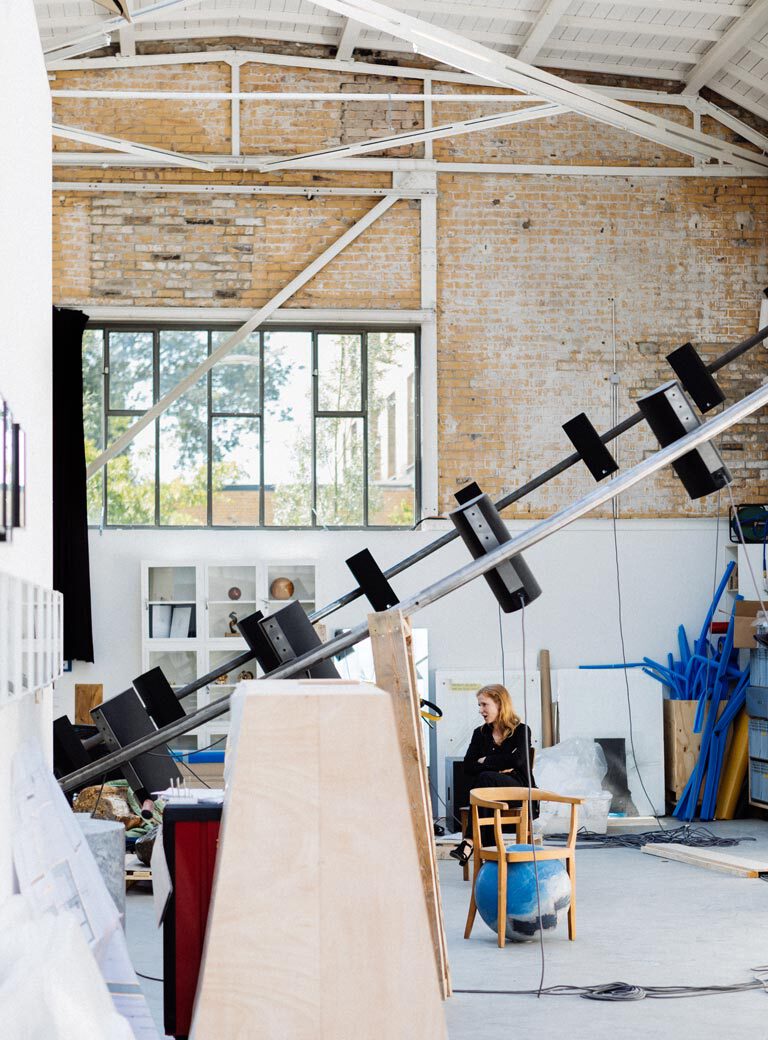
Why did you primarily choose sculpture as your art form?
I didn’t decide that, if you try to choose something in that way, you will fail. I had the basic teaching in my studies, but before that I also always did art. Not as professionally as today, of course. But you realize then what you can or can’t do. And I tried painting and realized that it didn’t advance me that much, that I didn’t have the patience for it, and that the expressive and abstract aspects of it didn’t make that much sense to me, I found it too laborious for me. Then I quickly realized where my own strengths lay, this was confirmed to me, so then I continued.
What was your first exhibition after graduation?
I can’t really remember anymore. I had countless group exhibitions. My first solo exhibition was in Hamburg, in Taubenstraße, in a project space of a fellow artist friend – Tjorg Douglas Beer. He had an off-space there.
Do you remember what you showed there?
Yes, my series Stand By, which I developed from 1999 to 2005. I showed photographs and a video showing on a monitor, they were black images. I had a small apartment in Berlin-Charlottenburg, in which there was little space to move around, and in this apartment I photographed the LED lights of various household appliances in the dark. I determined the distance from where I would take the photograph by the maximum distance from the appliance the confines of the apartment would allow; the photos looked like Hubble space shots, I then made a video of the images. I had no means or money to build anything for it. That’s why I just did photography and videos at the beginning of my career. In the video from 2003, entitled Space Room, I go into my apartment at night with the camera, zoom in and zoom out. The video gives the impression of spaceships flying towards you.
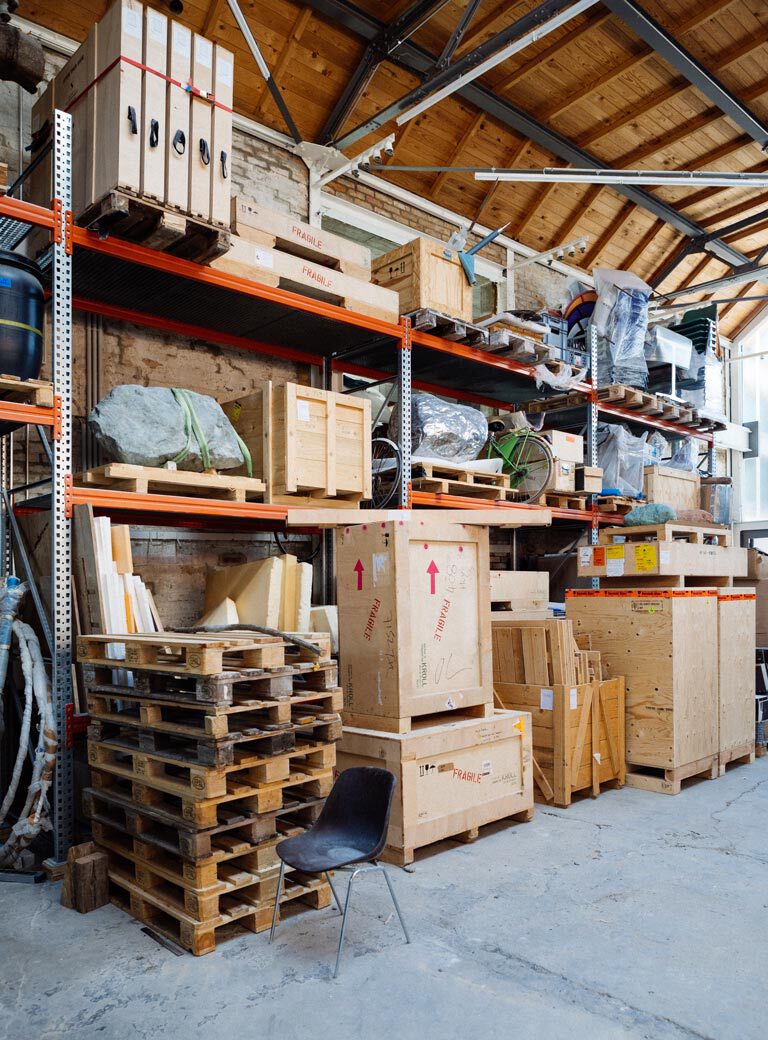
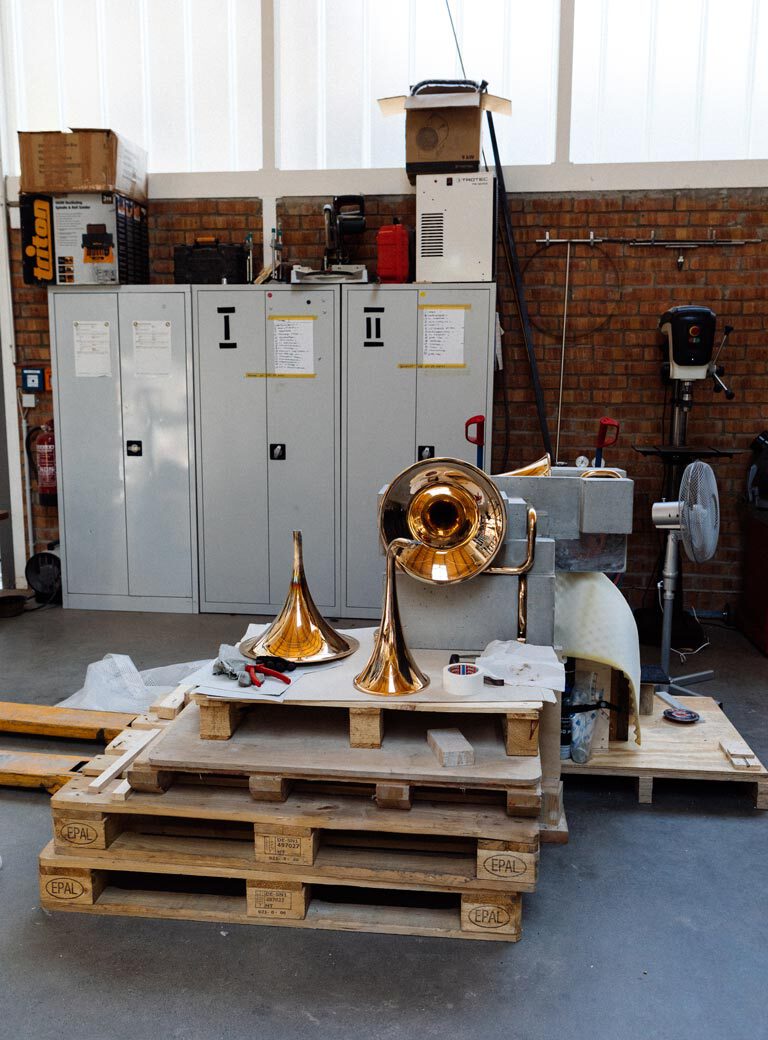
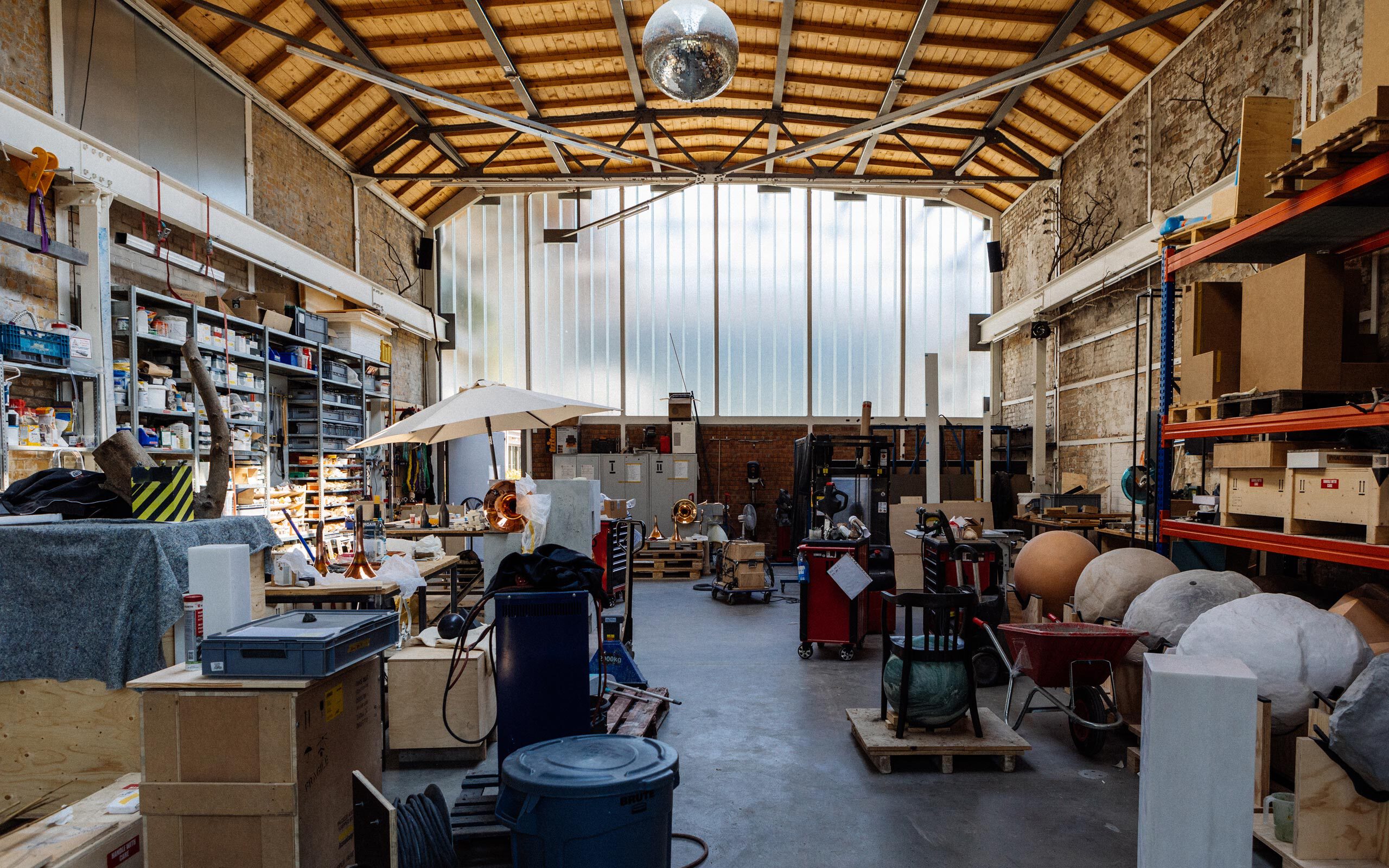
One can see in many of your artworks that you are very interested in the intersection of science, art and philosophy. Why do physical phenomena excite you?
If I knew that! I can’t say why that is. I’m interested in questioning and challenging things. If you repeatedly question things you automatically end up with philosophy, religion, and science. If you pursue questioning consistently, it’s unavoidable. You also look at chemistry, mathematics and in other philosophical directions. I’m simply interested in the different approaches to solving questions. This kind of universal thinking interests me.
What works are you working on right now?
I’m always working on many works simultaneously. I just opened a double exhibition at Kamel Mennour in Paris, where I’m showing a new series in which I revisited my old series Hypothetical Formations, these were graphs that looked like instruments or maps to other dimensions, I combined them with pieces of slate. The new series is called Amás(s) Astair. At the same time, I am currently doing a number of other projects too.
Can you tell us about the other projects?
You can see quite a lot of things here, like my chairs – Siège du monde. Then I’m still working on a series in which I want to divide metric, temporal, and other social systems into their smallest unit. It’s about the question: What are the smallest units leading to something, for example, the state? During the Corona virus period, I began doing paper works. Every day I made a work, like a diary. In addition, I am currently preparing several exhibitions.
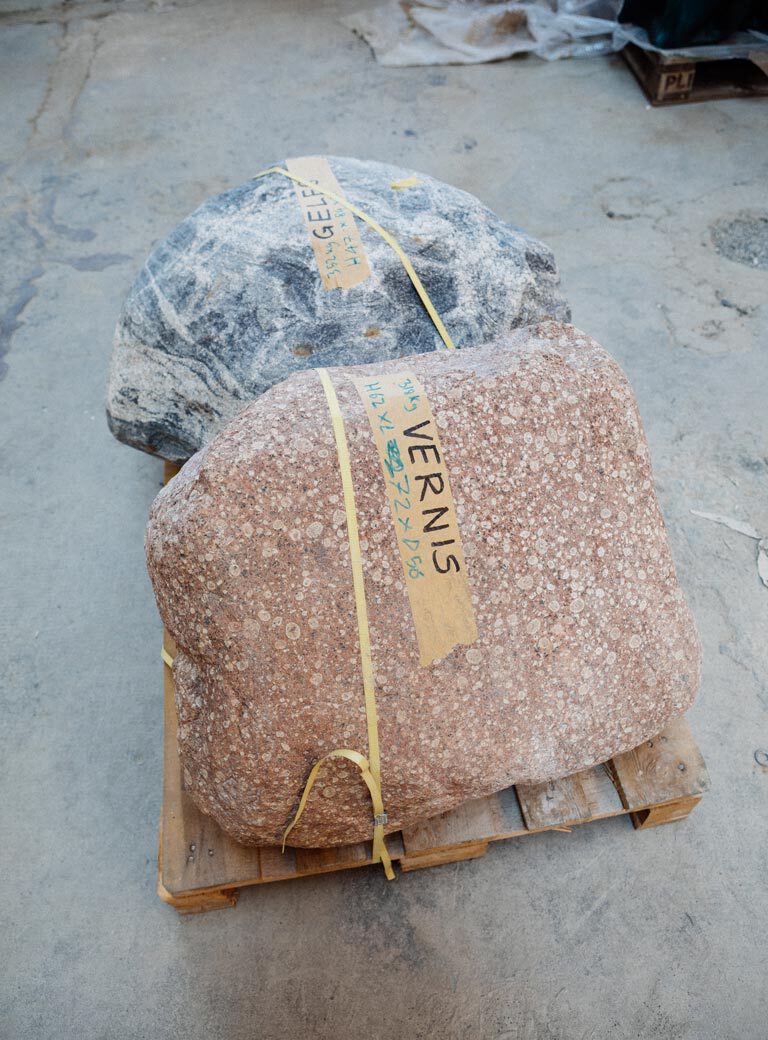
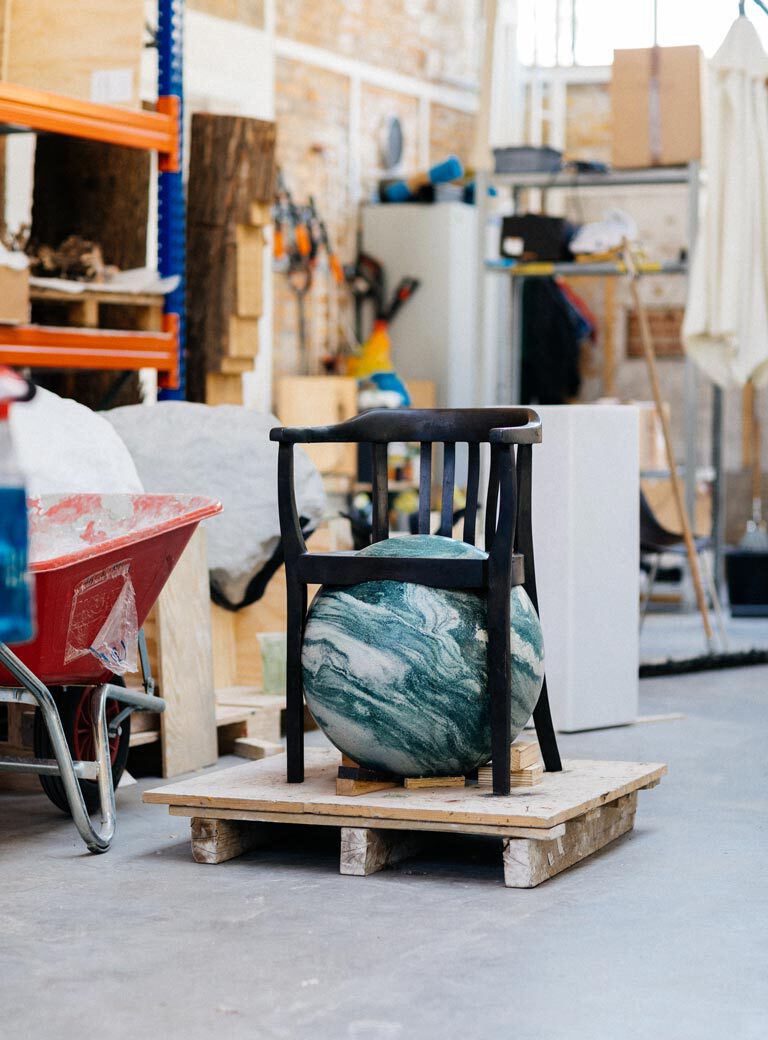
How did you get through the pandemic?
I worked as normal. In the first week, I sent everyone on vacation to sort out how to approach everything now. Many projects, trade shows, and exhibitions were stopped or canceled. That led to massive changes. I never found it beautiful. I also found it ridiculous how everyone suddenly started saying they had so much time now and thought it was great. This insane politicization made me angry. It wasn’t easy with the studio either.
Before Oberschöneweide you had your studios in Wedding and Kreuzberg?
The last one before that was in Weißensee and before that at Paul-Lincke-Ufer and before that at Sickingenstraße and before that in Wedding.
Does the studio affect the art you make?
I don’t really care about external circumstances and try to ignore them. Of course, that doesn’t always work.
You were born in Katowice. Do you still have connections to your hometown and the art scene there?
No, unfortunately not at all anymore. I left there when I was eight and went to school here and studied here.
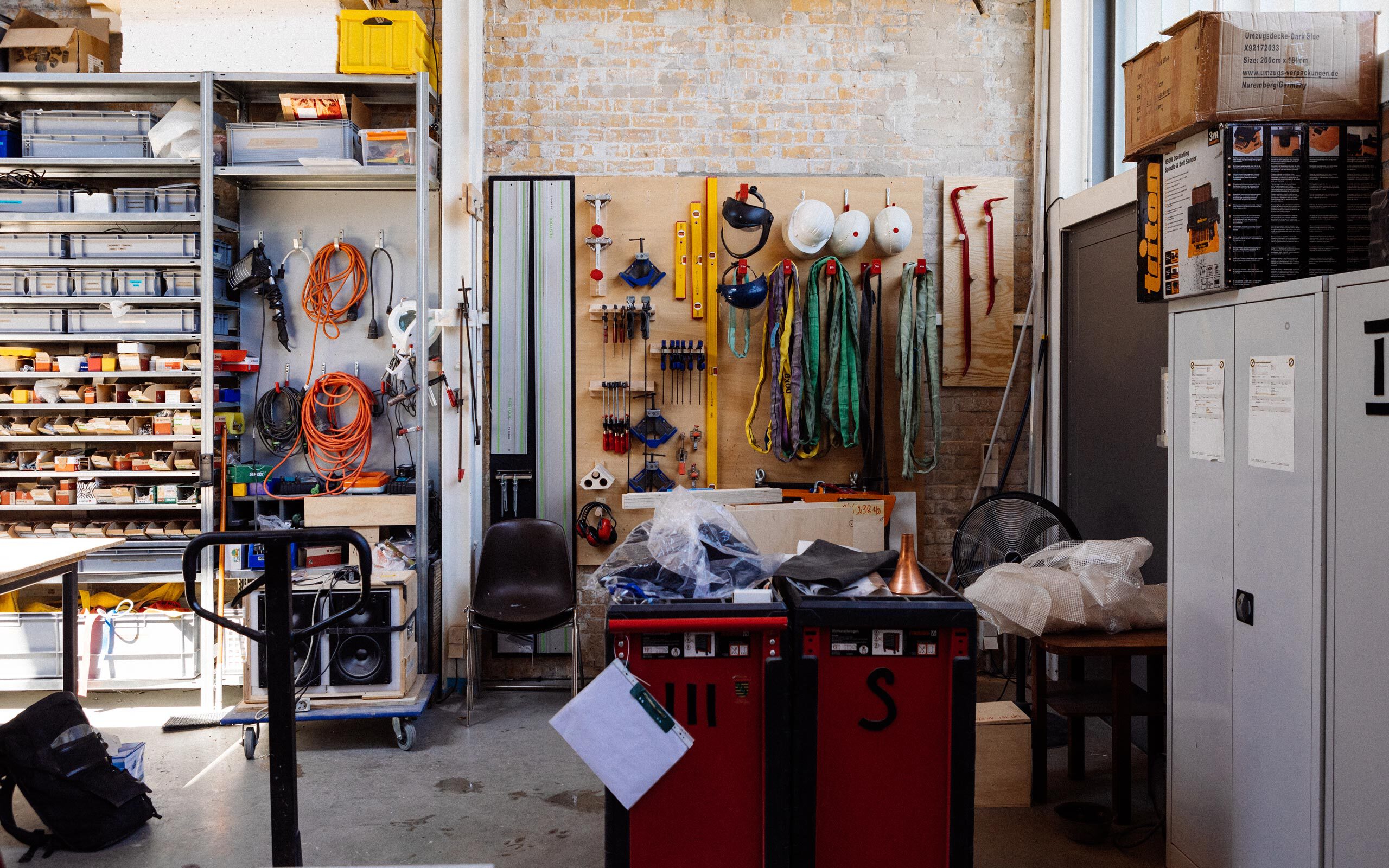
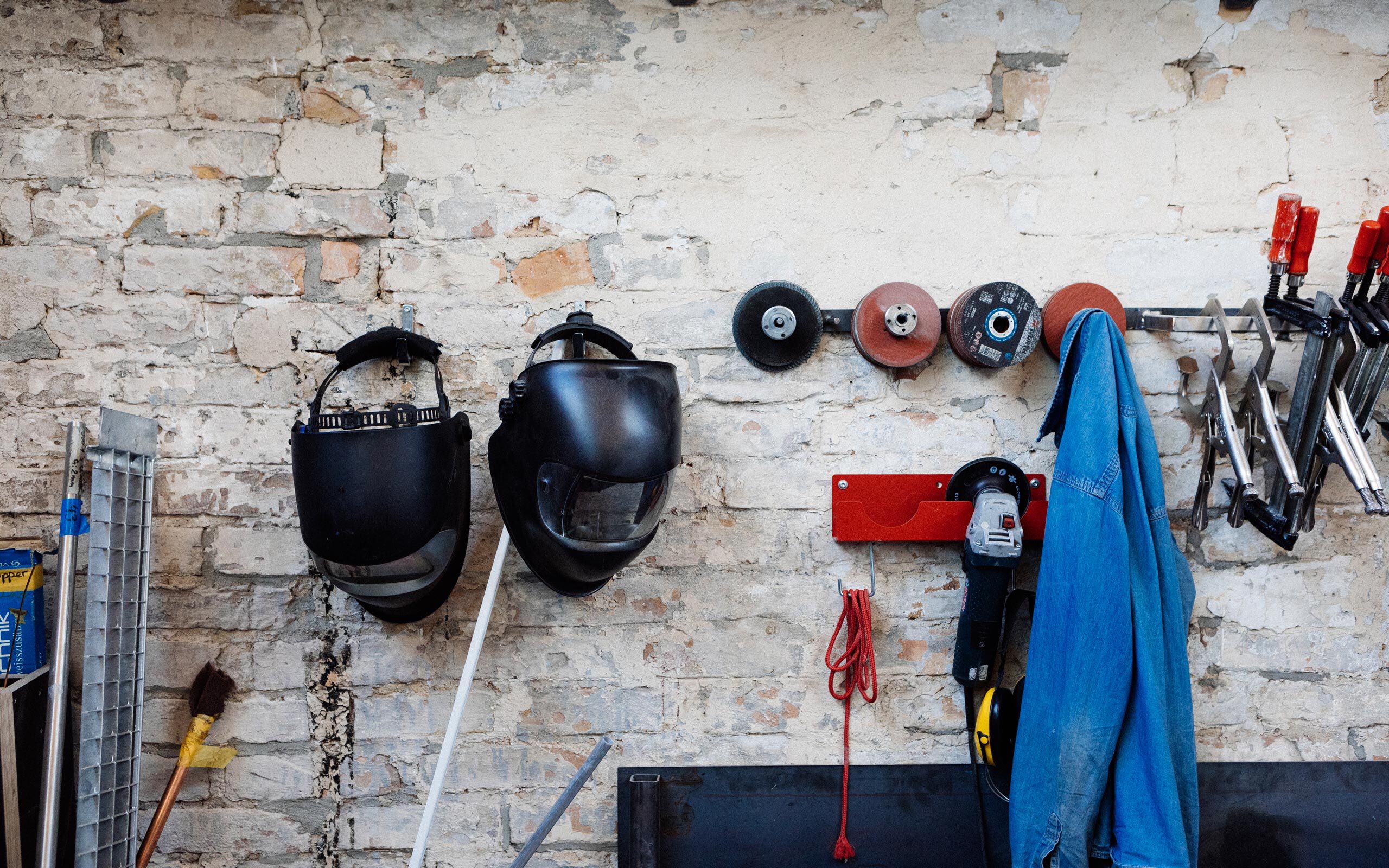
We’ve seen your Ghost Sculptures in the garden. Can you explain the concept of this series?
This is a humorous work. It concerns the question of what is matter. There are only 24 basic elements and yet we believe ourselves to be totally subjective beings. I dare to doubt that. What I refer to here are the essential elements, that is, those without which we cannot do at all. We have many more in us, only in traces, but they are more likely to have ended up in our bodies over time, most easily through food intake (e.g., aluminum from packaging). But the 24 elements here are the ones that have been proven to be essential for certain functions in the human body and are therefore present in every body. If you think about the elements further, you come up against 99.9 percent vacuum in us humans. We actually consist of nothing. The sculpture is the implementation of this thought of dematerialization and what can express that better than a spirit. I went into a scanning booth with a cloth blanket and scanned myself with this cloth over my head.
So a little like your installation on the roof garden of the Metropolitan Museum?
No, it has nothing to do with that. In the installation, I dealt with the geocentric view of the world and the idea of a universe conceived by humans. I was invited in 2017 and was supposed to do something on the roof terrace. You’re standing there on eight thousand years of human history, looking at this completely surreal skyline behind Central Park that looks a bit like an illustration. An illustration of a world that’s the way you thought the world had to be. It’s a completely backwards look at a bygone era. You stand there on this roof terrace and have an image in front of your eyes, which is itself museum-like. I looked at the skyscrapers, which are the absolute culmination of modern capitalism. You can’t really do more than that. There are these multi-billionaires who now reside in these tall, narrow towers there.
57th Street?
New Yorkers call them the ‘fuck you fingers’, because the skyline is actually a protected monument and should never have been built. But money overran that. And as a contrast to that, I developed my work called ParaPivot. It’s a metal frame with spheres that are reminiscent of a planetary system. I placed the spheres in such a way that it looks like they are resting on the towers, as if on pedestals. This is a commentary on this surreal view.
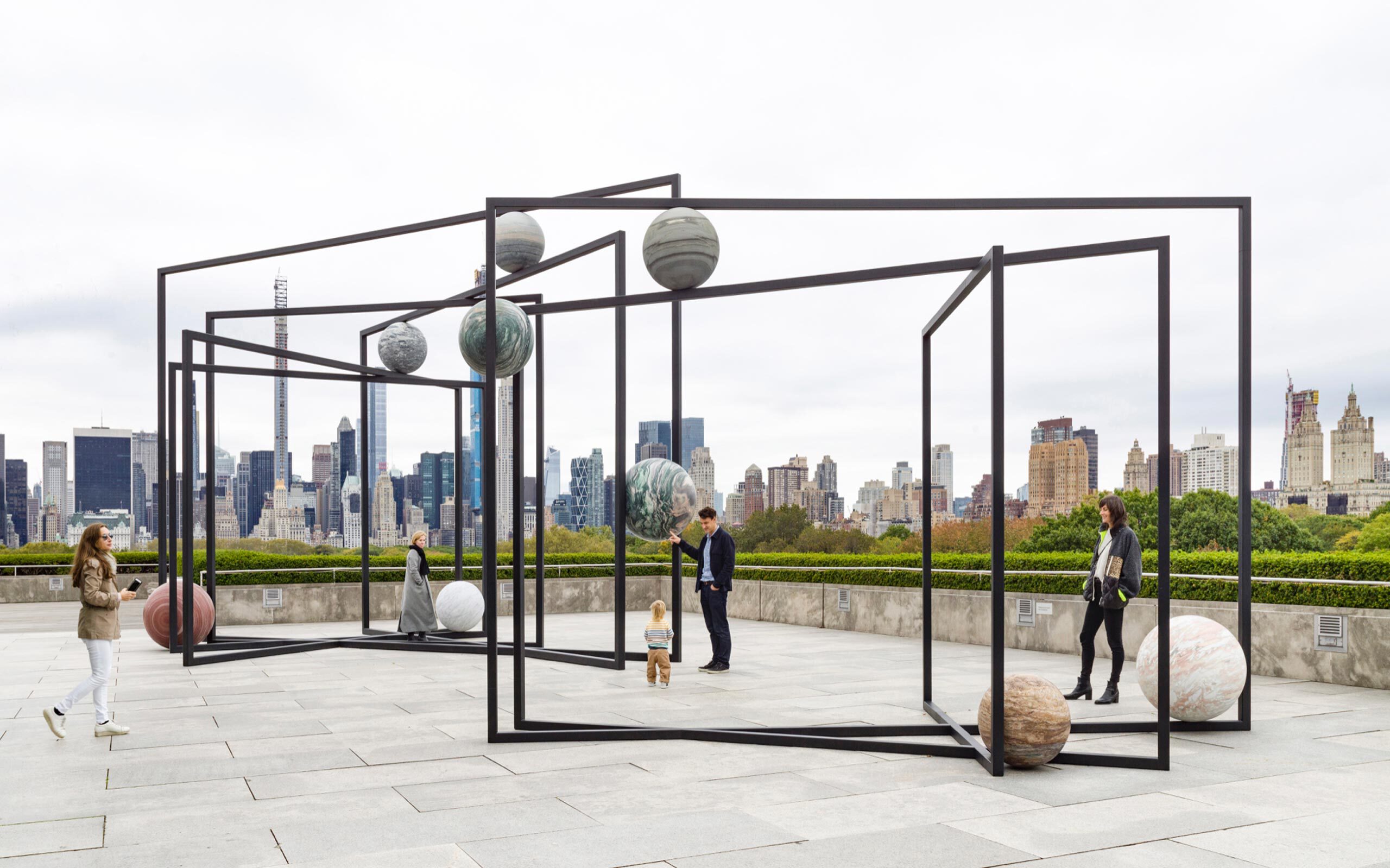
ParaPivot I, 2019, powder coated steel, stone (Masi, Vasa, Bianco Carrara, Azul Macaubas, Hermelin) 3 min 51, 600 x 574 x 1,025 cm, unique, Alicja Kwade, Installation view of ParaPivot I (2019) for The Roof Garden, Commission: Alicja Kwade, ParaPivot at The Metropolitan Museum of Art, 2019. Courtesy of the artist; 303 Gallery, New York; KÖNIG GALERIE, Berlin/London; and kamel mennour, Paris/London. Image, credit: The Metropolitan Museum of Art, Photograph by Hyla Skopitz
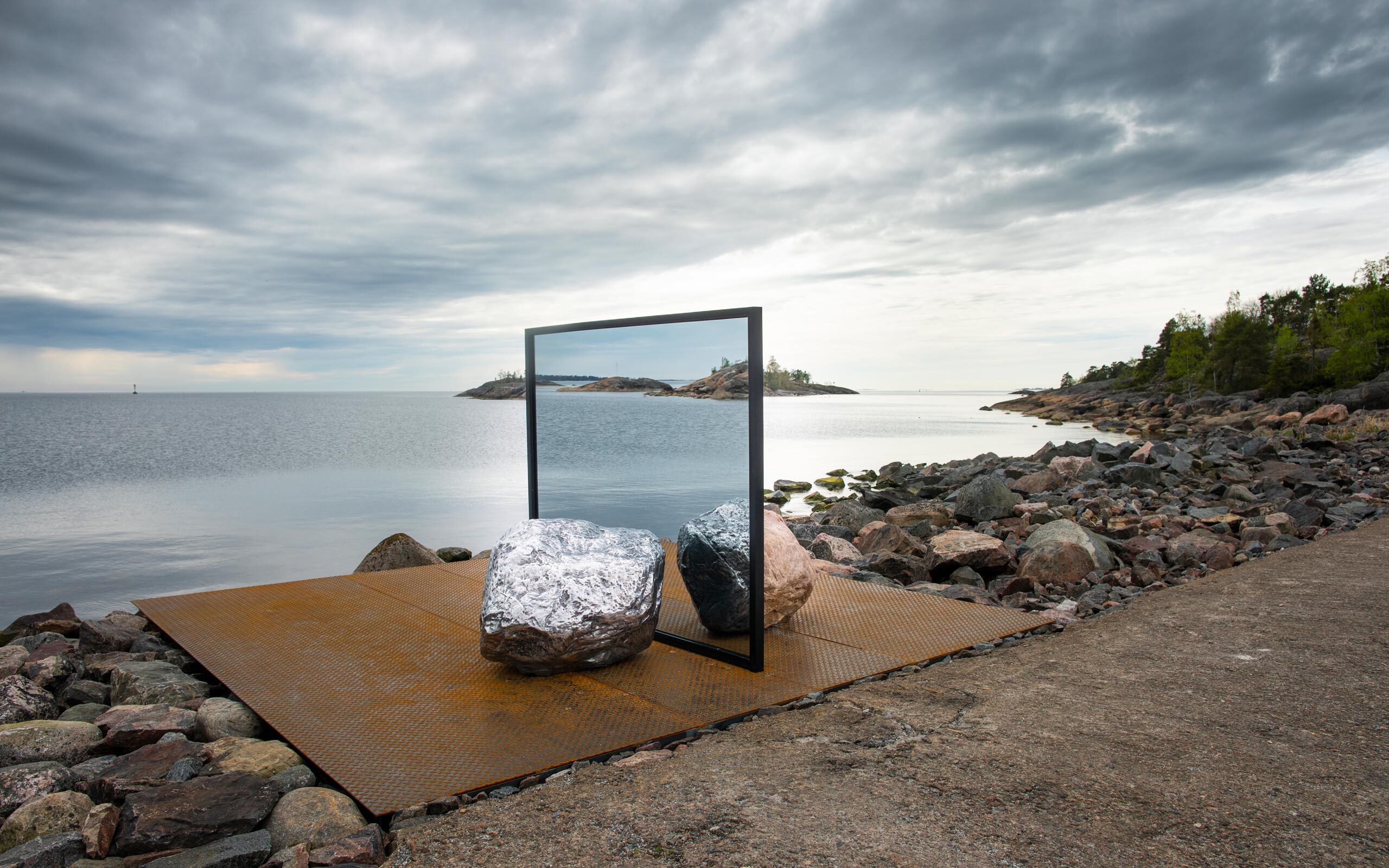
Big Be-Hide, 2019, Alicja Kwade, Installation view of Big Be-hide (2019) for Helsinki Biennial Helsinki 2021
Courtesy of the artist, KÖNIG GALERIE, Berlin/ London.; Helsinki Biennial
Image credit: Maija Toivanen.
Do you actually collect art?
An insane amount, but not as structured or organized as other collectors. I’m impulsive. Our whole apartment is covered with art.
Can you mention names of the artists whose work you collect?
They are primarily friends. But I don’t want to mention any names. They are both known and unknown artists.
You used to buy a lot of objects on eBay and put them into your art. Do you still do that today?
Not to the same extent as before, when I often worked with found objects from the Internet. It has become less frequent. At the moment I only buy chairs and tables that I use for my work.
Had this already started when you were studying?
Yes, in 1997 I was already active on eBay. My father was always very supportive of it. When eBay started, I signed up right away.
And then you bought what you were interested in?
No, there was always a plan. I used to try to get the same things in multiples and collect them in different forms. The same watch from 1920 produced in Berlin, twenty times. And again, I was interested in the process. Where do things come from, what happens to them, how do they change. I also collected Kaiser Idell lamps en masse. I’ve done a lot of work with them. In 2008, for example, in a work where the lamps hold mirrors.
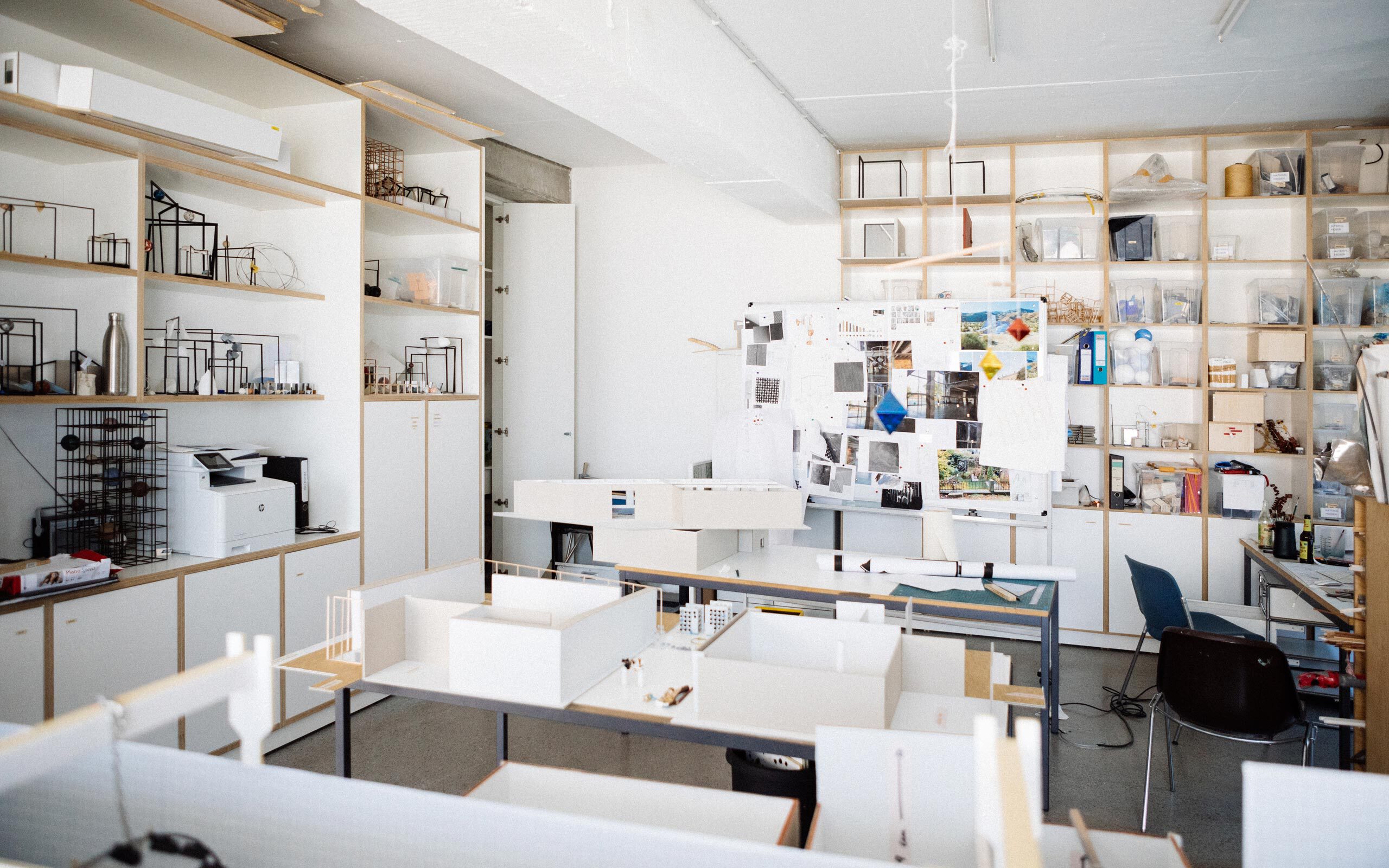
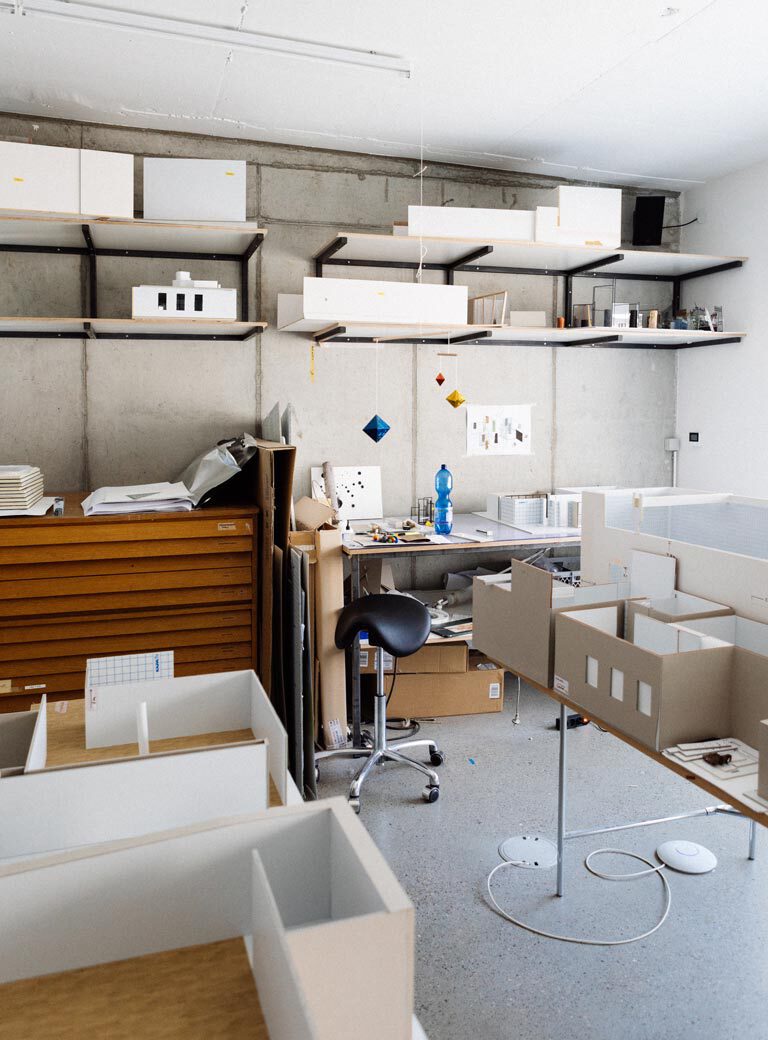
What is the typical creative process for a work of yours?
It’s always relatively similar. It’s rarely the case that you’re full of ideas at the beginning. You have to develop them laboriously. Art is a mental construct that has to be worked out. The more things you do, the more paths open up. And then comes the point where you have to sit down and check the thoughts for yourself. That can only be done mentally. After that, I start drawing it to vividly imagine the idea. And once I’ve done that, I usually talk to my architects and then we translate that into a three-dimensional structure on the computer. Then the work is produced in individual parts. Then we assemble it in the studio. And then it’s finished at some point.
How many employees do you employ for this?
We are ten permanent employees and fifteen freelancers. Most of the work is done by various craftsmen, but sometimes a stonemason is also here.
What are your current projects for the future?
As I said, the show at Berlinische Galerie. Then I have some stuff at the Helsinki Biennale. There’s a double exhibition in South Korea and a small project in Lower Austria. And the fairs are starting again. You really have to sort yourself out again right now.
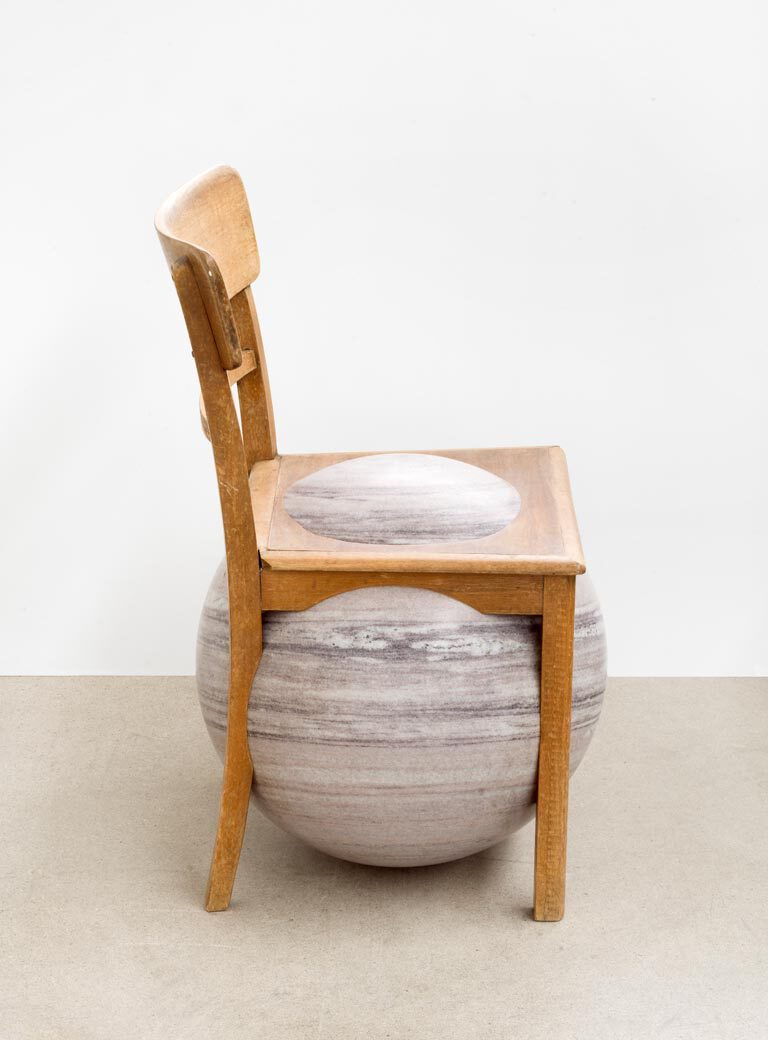
Siège du Monde, 2021, wood, marble, 83 x 46 cm, Unique, Courtesy of the artist, Photograph by Roman März
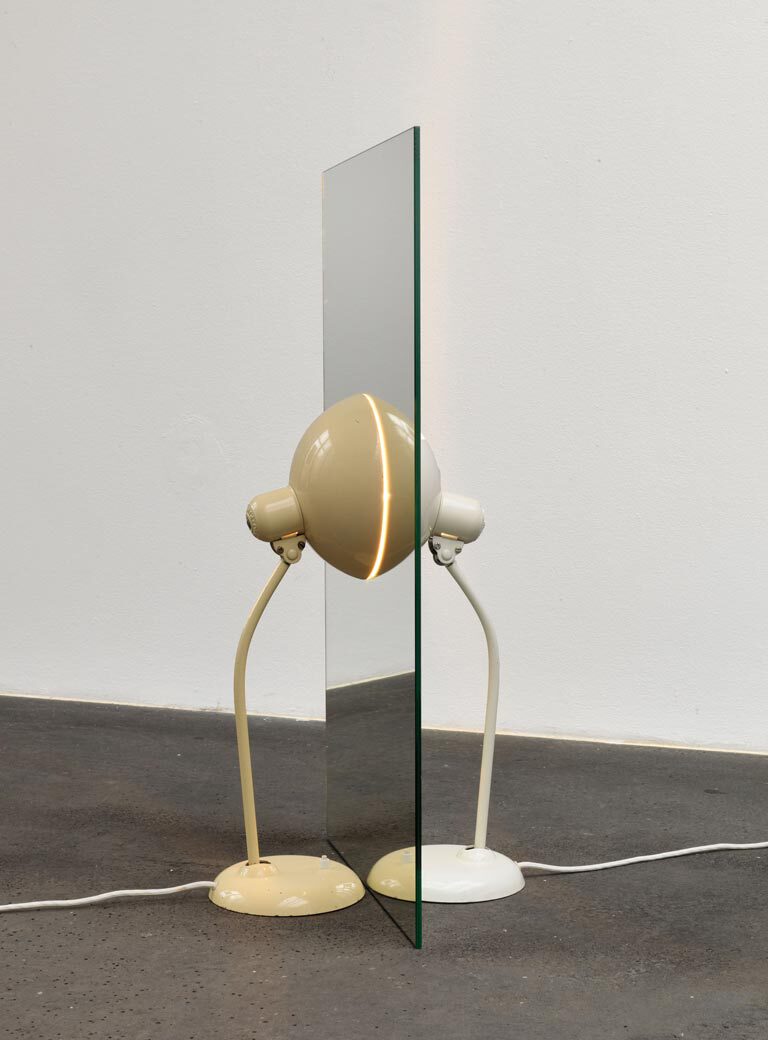
Parallelwelt (weiß/creme), 2008/2012, Kaiser-Idell lamps, two mirrors 3 min 51, 83 x 45 x 45 cm, unique, Courtesy of the Artist, Photo: Roman März
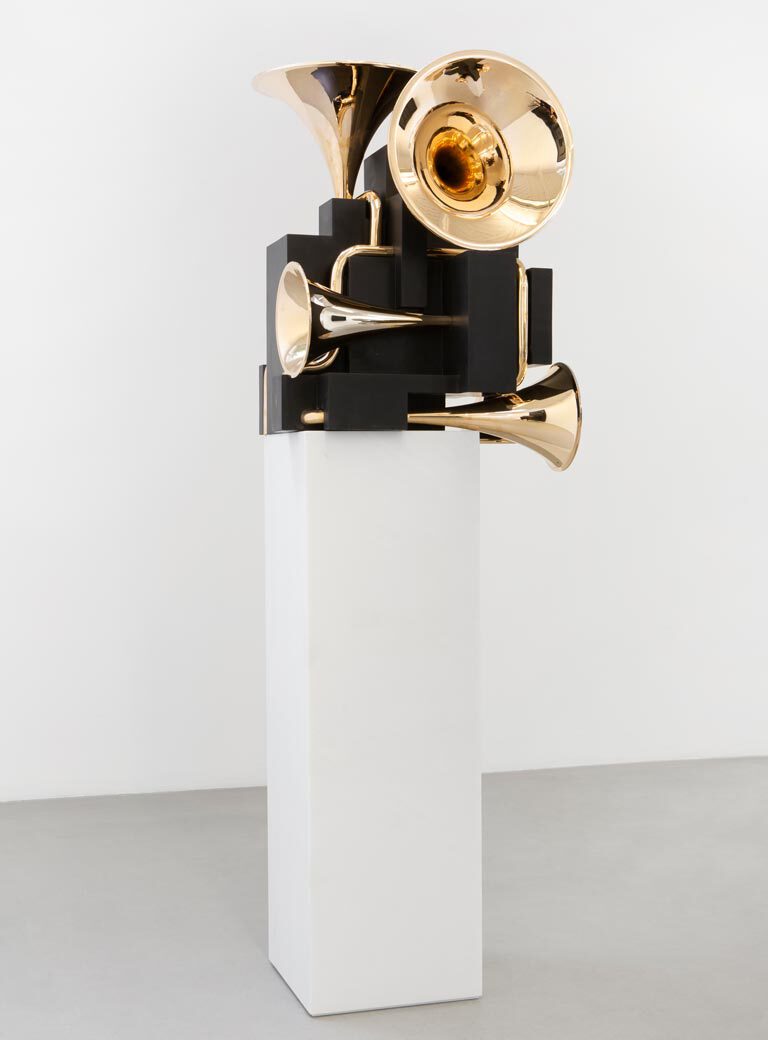
Amás(s) Astair, 2021, slate, bronze, marble, 173.5 x 61 x 47.5 cm, unique, Courtesy of the artist; kamel mennour, Paris/ London, © archives kamel mennour
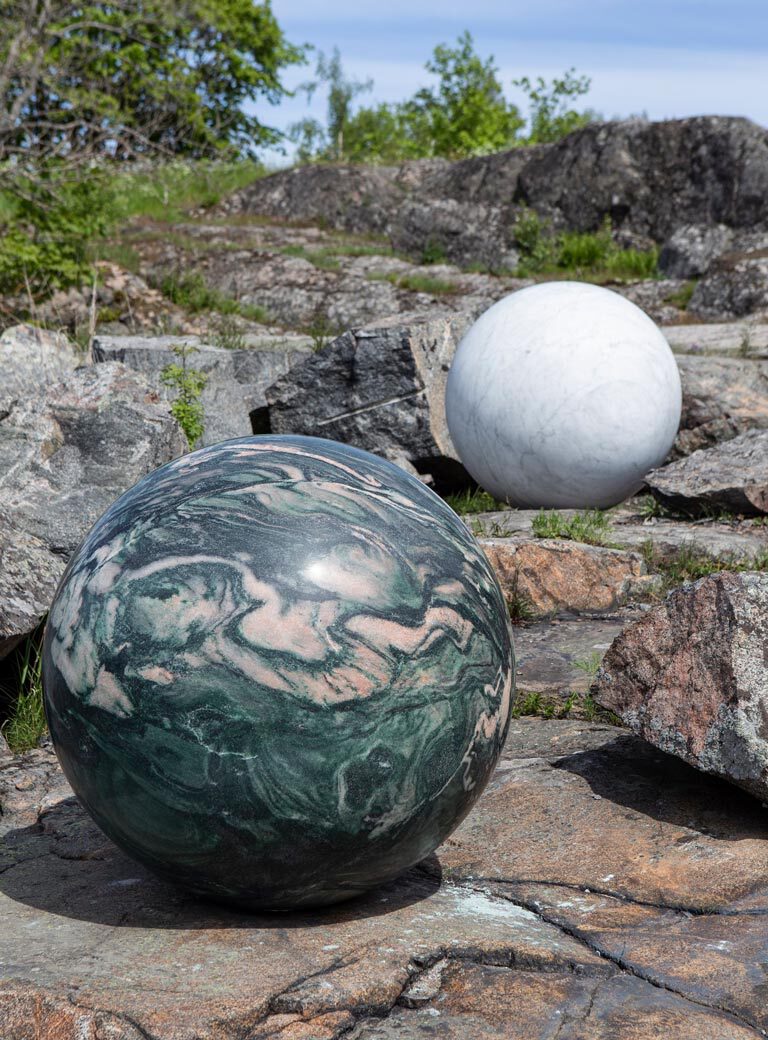
Courtesy of the artist, ©Maija Toivanen/HAM/Helsinki Biennial 2021
Interview: Kevin Hanscke
Photos: Nora Heinisch


